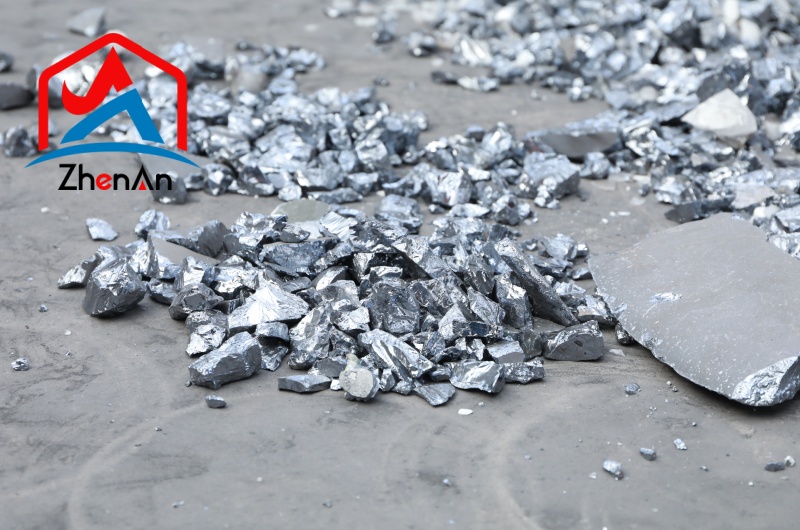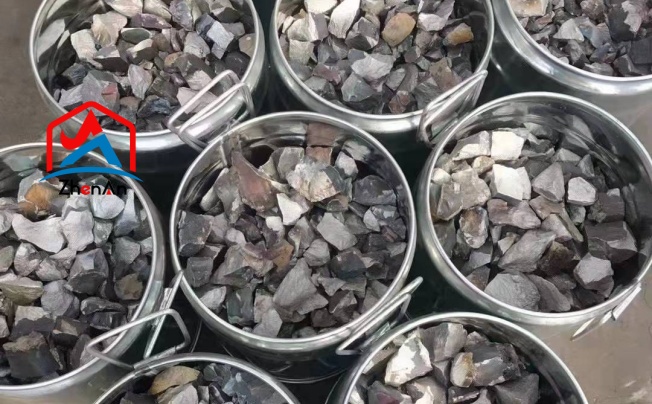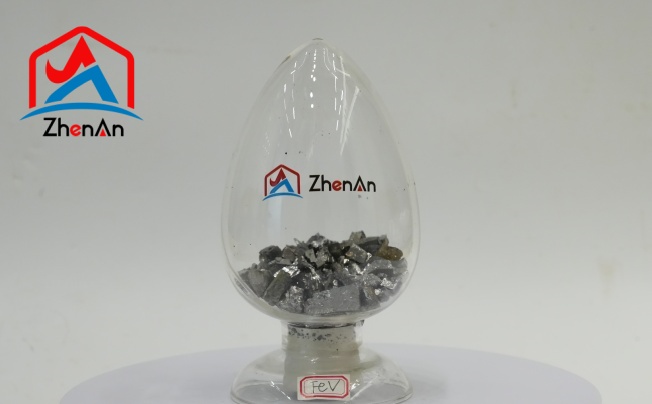BY  GENN
GENN
2024/12
Blog
Do We Use Vanadium Every Day?
Vanadium, a transition metal with the atomic number 23 and symbol V, often lurks in the shadows of more well-known elements like iron and copper. Named after Vanadis, the Norse goddess of beauty, due to its colorful compounds, vanadium possesses a unique blend of properties that make it indispensable across various industries.
The Versatile Utilization of Vanadium in Technology
Enhancing Steel with Vanadium
Vanadium plays a crucial role in the production of high-strength, low-alloy steels. By incorporating small amounts of vanadium into the steel composition, manufacturers can significantly enhance its strength, toughness, and resistance to wear and corrosion.
This results in the creation of durable and lightweight steel components that are widely used in construction, automotive manufacturing, and infrastructure projects. Vanadium’s ability to refine the grain structure of steel at the molecular level makes it a sought-after alloying element for producing superior-quality steel products.
Powering Renewable Energy Storage with Vanadium Batteries
Vanadium redox flow batteries have emerged as a promising technology for storing renewable energy generated from sources such as solar and wind power. These batteries utilize vanadium ions dissolved in an electrolyte solution to store and release energy efficiently.
Unlike traditional lithium-ion batteries, vanadium redox flow batteries offer advantages such as scalability, long-term durability, rapid response times, and the ability to maintain consistent performance over numerous charge-discharge cycles. The use of vanadium in energy storage solutions contributes to the advancement of sustainable practices by enabling reliable grid integration of renewable power sources.
Elevating Quality in Ceramics and Glass Manufacturing through Vanadium Compounds
Vanadium compounds play a vital role in enhancing the properties of ceramics and glass materials. When added during production processes, vanadium-based compounds can impart unique colors, improve thermal stability, increase chemical resistance, and enhance overall mechanical strength. In glass manufacturing, vanadates are employed as colorants to produce vibrant hues ranging from green to yellow depending on oxidation states.
The incorporation of vanadium compounds into ceramic glazes results in striking visual effects while also boosting structural integrity. The multifaceted applications of vanadium compounds contribute significantly to innovation within the ceramics and glass industries.
The Promising Potential of Vanadium in Health and Medicine
Potential Health Benefits of Vanadium as a Dietary Supplement
Vanadium, an essential trace mineral, has sparked interest in the health and wellness community due to its potential benefits as a dietary supplement. Research suggests that vanadium may play a role in regulating blood sugar levels, promoting healthy cholesterol levels, and supporting overall metabolic functions.
Studies have shown that vanadium can mimic the action of insulin in the body, making it a promising supplement for individuals with insulin resistance or type 2 diabetes. Additionally, vanadium is believed to possess antioxidant properties that can help combat oxidative stress and inflammation, contributing to overall well-being.
Use of Vanadium Compounds in Treating Diabetes
One of the most intriguing applications of vanadium in medicine is its potential use in managing diabetes. Vanadyl sulfate, a common form of vanadium compound, has shown promise in improving insulin sensitivity and glucose metabolism in individuals with diabetes.
By enhancing insulin signaling pathways and increasing cellular uptake of glucose, vanadyl sulfate may help regulate blood sugar levels more effectively. While further clinical trials are needed to fully establish the efficacy and safety of vanadium compounds for diabetic patients, initial studies are encouraging and warrant continued investigation into this novel treatment approach.
Unlocking the Anti-Cancer Properties of Vanadium
In recent years, researchers have delved into exploring the anti-cancer properties of vanadium compounds as a potential therapeutic strategy against various types of cancer. Studies have demonstrated that certain forms of vanadium exhibit cytotoxic effects on cancer cells by inducing apoptosis (cell death) and inhibiting tumor growth.
The unique ability of vanadium to interfere with signaling pathways involved in cancer progression makes it an intriguing candidate for targeted cancer therapy. While more research is needed to fully understand the mechanisms underlying vanadium’s anti-cancer effects and optimize its therapeutic potential, early findings suggest that this mineral holds promise as a valuable addition to the arsenal against cancer.
Uncommon Uses of Vanadium
- A Collector’s Delight: Vanadinite Mineral Specifications
Vanadinite, a striking mineral composed of lead chlorovanadate, is highly sought-after by mineral collectors worldwide for its vibrant red-to-orange-red color and stunning crystal formations. This rare vanadium mineral is often found in arid regions where lead minerals are present, such as Morocco, Arizona, and Mexico.
Collectors value vanadinite specimens not only for their aesthetic appeal but also for their rarity and unique geological formations. The intricate crystal structures of vanadinite specimens make them a captivating addition to any mineral collection.
The hexagonal prisms or barrel-shaped crystals exhibit a distinct lustre that catches the light in a mesmerizing way. Vanadinite’s rich coloration, ranging from deep red to fiery orange hues, adds a splash of vibrant beauty to any display.
Mineral enthusiasts appreciate the challenge of finding high-quality vanadinite specimens due to their limited availability and unique geological occurrences. In addition to its visual allure, vanadinite holds significance in metaphysical beliefs and energy healing practices.
Some consider vanadinite crystals to possess grounding properties that promote focus, organization, and vitality. Whether admired for their aesthetic appeal or spiritual attributes, vanadinite mineral specimens continue to captivate collectors with their exquisite beauty and geological rarity.
- The Artistic Versatility of Vanadate Pigments
Vanadium-based pigments derived from various vanadium salts have been used by artists throughout history to create vivid colors in paintings, ceramics, and other artistic mediums. Vanadate pigments offer a range of hues from bright yellows to deep greens based on the oxidation state of vanadium ions within the compound.
Artists value these pigments for their lightfastness and vibrant color saturation that add depth and intensity to their creations. In art history, vanadium yellow was particularly popular among painters during the late 19th-century Impressionist movement for its bright hue that captured the essence of sunlight in outdoor scenes.
The use of vanadium-based pigments expanded into modern art movements due to their chemical stability and compatibility with various painting techniques. Ceramists also incorporate vanadium compounds into glazes to achieve unique color effects on pottery and tiles.
The versatility of vanadate pigments extends beyond traditional art forms into contemporary design applications such as industrial coatings and architectural finishes. The enduring popularity of these vivid pigments reflects the enduring legacy of vanadium in enhancing artistic expression across diverse creative disciplines.
- Vanadium’s Role as a Semiconductor
Vanadium minerals containing pentavalent or tetravalent oxidation states exhibit semiconductor properties that have applications in electronic devices and solar cell technology. Certain types of layered transition metal oxides containing vanadium ions can function as efficient semiconductors due to their variable conductivity based on external stimuli like temperature or light exposure. These materials hold promise for advancing semiconductor technology through enhanced performance characteristics.
Research into utilizing vandate minerals as semiconductors has led to innovations in electronic components such as diodes, transistors, sensors, and memory devices with improved efficiency levels compared to traditional silicon-based semiconductors. The unique electronic properties exhibited by certain forms of crystalline vandate compounds offer new avenues for developing next-generation semiconductor materials with enhanced conductivity rates and stability under varying environmental conditions.
The integration of vanadium-based semiconductors into emerging technologies like flexible electronics and optoelectronic devices showcases the transformative potential of this versatile element in driving innovation within the semiconductor industry.












